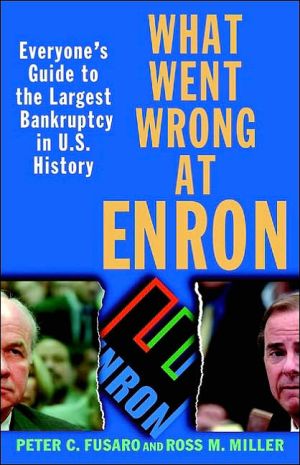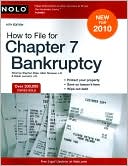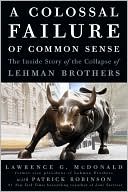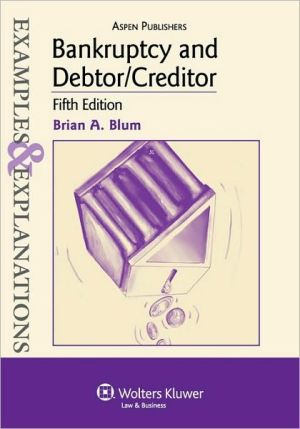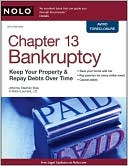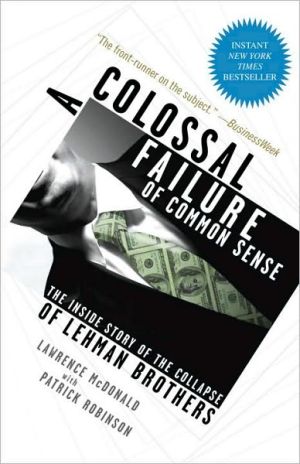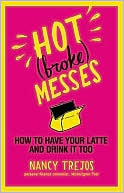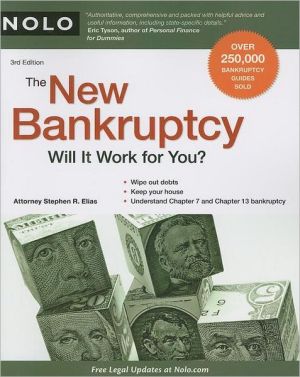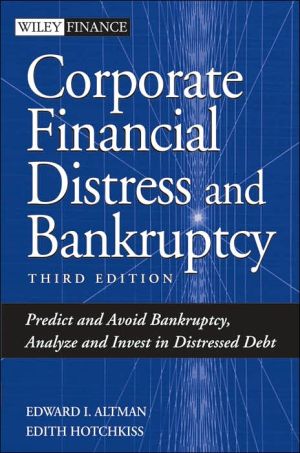What Went Wrong at Enron: Everyone's Guide to the Largest Bankruptcy in U.S. History
An easy answer guide to the difficult questions surrounding Enron What Went Wrong at Enron explains the critical steps, transactions, and events that led to the demise of a company that was once considered one of the most innovative corporations in the United States. Energy risk management expert Peter Fusaro gets inside Enron and provides a coherent account of the who, why, where, and when of this corporate debacle, without sacrificing the complexity of what has happened. Enron has been...
Search in google:
An Easy-To-Read Guide For Everyone"Do not put another dime into the stock market before reading this book. In all the millions of words that have been written about the Enron scandal, these are the first that really explain, in a way anyone can understand, what actually happened in the greatest stock swindle of modern times."-Christopher Byron, author, Martha Inc."The Enron story, for most of us, is a monster. Fusaro and Miller clarify what went wrong in a manner that allows anyone to get their arms around the beast quickly, without killing oneself."-Bill Crawford, former Chicago Tribune financial writer and Pulitzer Prize winner"The authors' sharp insights into Enron's self-destructive culture provide a clear road map into its massive failure."-Peter Behr, Washington Post financial reporterWhat Went Wrong at Enron is the first comprehensive and clear explanation of what happened at Enron. Peter C. Fusaro and Ross M. Miller take you inside Enron and show you the who, why, what, where, and when of the sinking of this corporate Titanic. In an engaging style, they explain what happened and uncover the mistakes that led to Enron's fall-in a way that anyone can understand. What Went Wrong at Enron offers a fascinating backdrop to all the whistle-blowing, backstabbing, grandstanding, deception, posturing, and silence that has become the Enron story. Washington Post financial reporter - Peter Behr The authors sharp insights into Enron s self-destructive culture provide a clear road map into its massive failure.
A popular notion as to why Enron failed is that its leaders didn’t “stick to their knitting.” When Ken Lay joined Houston Natural Gas (the firm that would grow to become Enron) as its chief executive officer (CEO) in 1984, the company was an undistinguished utility whose business focused on moving natural gas through the pipelines that were its major assets, extending thousands of miles across the United States. Over time, Enron became a trading giant that would play a major role in every new market that came along, luring away some of Wall Street’s top talent in the process. But in the late 1980s and early 1990s, the deregulating natural gas and electricity markets would be its bread and butter both as an energy company and as a Wall Street type trading firm. While there can be no question that Enron’s hubris caused it to eventually overextend itself, entering markets where it had no business being, its initial inclination to expand was a sound business decision. \ From the beginning, Enron was different from other companies. Most successful companies trace their roots to a powerful innovator and the products that grew out of his or her innovation. Thomas Edison’s lightbulb ultimately be-came the General Electric Company. Bill Gates’s brilliant marketing of a personal computer operating system laid the foundation for Microsoft. In contrast, Enron was based on an idea. While Ken Lay, Enron’s founder, did not think of the idea that fueled Enron’s growth, he embraced and advocated it with the fervor that one might expect from the son of a Baptist minister from rural Missouri. The idea that drove Ken Lay and fueled Enron was that of the power of the free market system.\ Ken Lay’s background was quite unlike that of a typical corporate chieftain, most of whom have formal training in engineering and/or management. All of Ken Lay’s degrees, including his Ph.D. from the University of Houston, were in economics. Among the many positions he held before he settled down at Enron was a job teaching economics as an assistant professor at George Washington University. Ken Lay could easily have ended up writing policy papers at a conservative think tank or as a pundit on a cable news network, but instead he became head of one of the largest (and for a time one of the most respected) companies in the United States.\ In the 1980s, the world’s image of Texas businessmen was shaped by the television show Dallas, which centered on the chicanery of Texas oil baron J. R. Ewing. The fictional J. R., played to perfection by Larry Hagman, epitomized what many people saw to be the evils of the market system. He sold a dirty product, crude oil, and employed even dirtier means to get his way. J. R. Ewing’s behavior went far beyond that of a typical capitalist to that of an out-and-out anarchist. To him, the rules of the market were meant to be broken whenever it was convenient. In contrast, Ken Lay dealt in a relatively clean product, natural gas.\ Until demand for energy started to outstrip supply in the 1960s, oilmen found natural gas to be a nuisance. Crude oil and natural gas were often discovered together, and oilmen would have to burn the gas off in large flares in order to extract the oil. Fortunately for the blue skies of Texas, natural gas, unlike oil and other fossil fuels, burns very cleanly. Still, the growth in the big cities of Texas and California, as well as other sprawling metropolitan areas that relied on the auto-mobile for transportation, led to a growing pollution problem that by the 1960s could no longer be ignored. With other alternative energy sources still on the drawing board, environmentalists embraced natural gas as the only fossil fuel to provide a clean alternative to petroleum products.\ HOUSTON’S J. R. OF NATURAL GAS Before we explore where Ken Lay’s crusade for natural gas ultimately led him, it is worth noting that Ken Lay and J. R. Ewing did have many things in common. Lay was not known for tolerating rivals, even if they had been close business associates for some time. At Enron, for example, the vice chairman’s position was known by many Enron senior executives as the “ejector seat.” Those who had been ejected from this number two position, or jumped out themselves, included executives such as Richard Kinder, Rebecca Mark, Cliff Baxter, and Joseph Sutton, all of whom held the vice chairman’s role in title or function. It seemed that the faster Enron grew, the sooner it would need a new vice chairman. Furthermore, like J. R., Ken Lay exerted political influence and deal-making savvy to have the rules changed in ways that worked in his and Enron’s favor. Lay’s transformation of Houston National Gas into Enron, and his ability to remain in the driver’s seat, would certainly have earned one of J. R. Ewing’s trademark grins.\ When Lay took the reins of Houston Natural Gas in 1984, he faced an enormous problem. Houston Natural Gas was a relatively small company, and Wall Street was in the midst of a mergers and acquisitions binge in which the little fish were becoming an endangered species with so many big fish eager to swallow them up. Indeed, Kenneth Lay came to the attention of the board of directors of Houston Natural Gas when the company was in the process of fending off a hostile takeover bid from Coastal Corp. He was quickly able to double the size of the company by acquiring two other natural-gas companies, Florida Gas and Transwestern Pipeline. Lay’s next move was to team up with InterNorth, a similar company based in Omaha, Nebraska, whose pipelines were a natural fit with Lay’s.Though InterNorth saw itself as acquiring Houston Natural Gas, Lay pitched it to his people as a merger. Sure enough, it took only a year for him to wrest control of the new company, which was now called Enron, from its CEO, Samuel Segnar. By itself, the new name was a signal of the company’s ambition, given its re-semblance to that of Exxon, the energy giant where Ken Lay had started his career in 1965 when the Houston division was known as Humble Oil.\ In the process of creating Enron, Ken Lay had to fight off a bid by Irwin Jacobs, the renowned corporate raider, to take over the company. Jacobs had accumulated a substantial stake in InterNorth before the merger, and Enron got rid of him by buying back this stake at a substantial premium. Jacobs’ tactic of mounting a threat to take over a company for the purpose of selling the shares back to it at a huge profit, something Gordon Gekko did in the 1987 movie Wall Street, was popularly known as “greenmail.”\ Ken Lay could only save Enron from the clutches of Irwin Jacobs by using $230 million in excess funds in the employee pension fund to buy stock and by borrowing the money to pay him off. To get this money, Ken enlisted the aid of Michael Milken, Wall Street’s junk bond king who operated out of the Beverly Hills branch of Drexel Burnham Lambert. Until Milken came along, Drexel was a second-rate New York investment bank. It then quickly gained prominence as the premier issuer of junk bonds before collapsing in 1990 as the result of a scandal that would ultimately send Michael Milken to prison.\ Like Ken Lay, Michael Milken was an idea man. His big idea came from research that he conducted as a student at the Wharton School of Finance. He found that corporate bonds that the ratings agencies did not consider worthy of gaining their seal of approval in the form of an investment-grade rating, which came to be known as junk bonds, were a great investment. Financial markets tended to avoid such bonds, so their prices were usually much lower than their true value. If Milken’s reasoning had stopped there, that in-sight alone could have made him quite wealthy, but he took things another step further and became filthy rich as a result.\ The bonds that Milken studied were mostly “fallen an-gels.” These bonds were investment grade when they were issued but over time had fallen out of favor with the agencies (led by Standard & Poor’s and Moody’s Investors Service) that rate them. Usually these downgrades were the result of business setbacks that drained a company’s financial re-sources and raised the possibility that it might eventually de-fault on its bond payments. The main reason that the price of a bond that fell into disgrace could plunge to bargain levels was that large investment managers, especially those who managed pension funds, were legally bound to hold only investment-grade bonds. In general, the companies that had the financial strength to issue bonds were large companies, leaving smaller companies out of the financial markets and at the mercy of banks.\ Michael Milken, though sheer force of will and hard work, created a new financial market in which smaller companies could issue junk bonds and investors could buy them, making both sides better off and generating huge fees for Milken and his Drexel Burnham brethren that had no precedent on Wall Street. Milken not only helped companies to issue junk bonds, he increased their value to investors by maintaining an active secondary market for them after they were issued. (Unlike stocks, only a tiny fraction of all bonds are traded on public ex-changes.) The main problem with junk-bond financing is that investment bankers, lacking the regulatory oversight of their less well compensated counterparts at commercial banks, in the heat of competition could make one bad deal after another. Such deals would overload the issuing company with debt to the point where one wrong move could drive it into bankruptcy. The investors in the junk bonds would suffer as well because the value of their investment would be reduced to whatever they could salvage in bankruptcy court, which often was pennies on the dollar. In the short run, the deal makers would profit from their huge fees, but as bankruptcies increased, which they did in the early 1990s, they would become the lepers of Wall Street for several years.\ As the money that could be made from junk bonds in-creased, so did the tendency to violate securities laws. The biggest offender was Ivan Boesky, whose “greed is good” attitude and insider-trading activity inspired the creation of the Gordon Gekko character in Wall Street. Milken had close ties to Boesky, and those ties ultimately got Milken a prison sentence as part of a plea bargain. While Milken maintains his innocence, his poor judgment in picking his business partners in the process of building his empire led to his downfall regardless of whether he truly committed a crime.
Preface: In the Beginning ...vii1Ken Lay's Junk Bond Ride Up on the Natural Gas Express12A Pattern of Less than Full Disclosure113The Skilling Case Study254The Downside of Rank and Yank395A Market a Day Keeps the Debt Away (But Only Temporarily)536Enron Goes Online697Broadband Is a Costly Mistake838Enron Takes on Water959From Arrogance to Bankruptcy10710Of Talking Heads and Quiet Deals12511The Only Place to End the Enron Story145Cast of Characters151Through the Pipeline: An Enron Time Line163The Enron Files181References217About the Authors227Index229
\ From Barnes & NobleThe Barnes & Noble Review\ The first clear-eyed look at one of the greatest fiscal fiascos in corporate history, this short but informative book by veteran authors Peter C. Fusaro and Ross M. Miller provides a detailed summary of a truly sprawling scandal. The authors move swiftly, beginning with a brief survey of Enron's history, from its birth in the mid-1980s to its hype-heavy late-'90s zenith to its precipitous crash in early 2002. Along the way, they introduce key players -- Lay, Skilling, Fastow, and others -- outline the company's partnerships, and explore some of the complex financial issues involved in its collapse. Many of the most basic questions surrounding the overinflated energy behemoth -- What were the company's goals and strategies? What role did accounting giant Arthur Andersen play in concealing Enron's misdeeds? What was the nature of the relationship between CEO Ken Lay and President George W. Bush? -- are examined here with direct, just-the-facts clarity. One note of caution should be sounded, however: This isn't a comprehensive guide to anything and everything connected with Enron, particularly since it was written before the scandal's inevitable courtroom finales. Think of this book as an expanded version of the playbill you get when you first walk into a theater: It will introduce the actors, set the scene, and give you the background you need to know before sitting down to watch the drama unfold. (Sunil Sharma)\ \ \ \ \ Peter BehrThe authors’ sharp insights into Enron’s self-destructive culture provide a clear road map into its massive failure. \ — Washington Post financial reporter\ \
